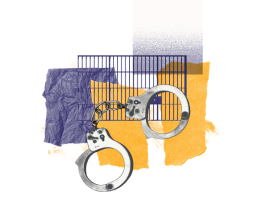At America's Expense: The Mass Incarceration of the Elderly
At America’s Expense compiles extensive data detailing epidemic of aging prisoners in the United States. It provides a comprehensive 50-state and federal analysis of the unnecessary incarceration of aging prisoners and provides a fiscal analysis showing the actual amount states would save, on average, by releasing aging prisoners: over $66,000 per year per released prisoner. The report also includes new data showing that the elderly population is growing because of harsh sentencing laws and not because of new crimes, as well as data highlighting the low public safety risks posed by elderly prisoners. At America’s Expense supplies detailed and practical legislative solutions that states and the federal government can implement to address the dramatic and costly growth in the number of elderly prisoners without putting communities at risk.
Despite evidence that elderly people are far less likely to commit crime than the rest of the population, more than $16 billion of taxpayer money in the US is spent annually locking up hundreds of thousands of relatively low-risk prisoners who are 50 years of age and older, according to the ACLU's report. Age 50 is the criminological consensus of when a prisoner becomes elderly because people age physiologically faster in prison.
The report finds that by 2030, there will be more than 400,000 elderly prisoners behind bars, a 4,400 percent increase from 1981 when only 8,853 state and federal prisoners were elderly. This is despite universal agreement among criminologists that the propensity to commit crime plummets with age. In 2009, just over two percent of individuals between the ages of 50 and 54 were arrested, and virtually no people 65 or older were arrested. As a national average, just five to 10 percent of aging prisoners return to prison for any new crime, according to the report.
The United States currently imprisons 246,600 Americans 50 and older, a generally low-risk population that costs much more to keep locked up than younger prisoners, according to the report. In Louisiana about 6600 elderly are in prison. It costs $34,135 per year to house an average prisoner, but $68,270 per year to house a prisoner 50 and older.
Louisiana, which incarcerates more people per capita than any other state, has made strides in correcting this problem: last year the state legislature passed a law granting certain elderly prisoners access to a parole hearing, during which parole boards can use risk assessment tools to accurately evaluate whether a prisoner can be safely released. This year several parole eligibility bills cleared the legislature, including one that will allow nonviolent and non-sex offenders access to a parole hearing if they achieve certain benchmarks in prison. These new laws will ease taxpayer burden by allowing prisoners to return to their families and to become taxpayers, while at the same time maintaining public safety.
Related content

Inside One Governor’s Crusade to Tear Down the Wall Between Church...
September 4, 2024
Federal judge: ‘I don’t think robbers would ask for help’
June 7, 2024
New Louisiana law will make it harder for bystanders to film police...
May 30, 2024The 2024 Regular Session of the Louisiana Legislature
May 30, 2024
It’s our right to observe the police. These states have decided...
April 26, 2024
Tough on Crime Made Louisiana Less Safe—And Cost Taxpayers Way More...
March 7, 2024
ACLU of Louisiana Testifies at Committee Hearings During Special...
February 21, 2024
ACLU of Louisiana Warns of Dangers from Partnership between...
February 9, 2024
